Here in Jakarta I have gotten to try lots of different foods. Since I am restricting this blog to plant-related subjects only, I will share the more planty food I have eaten here on my trip.
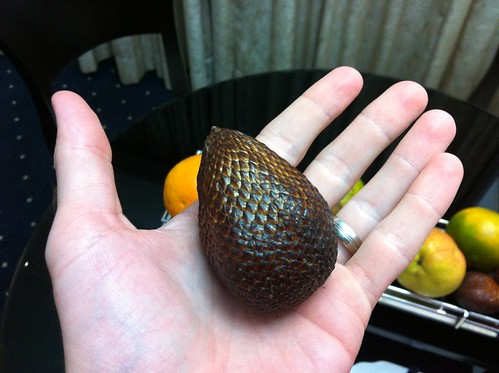 |
| Salak |
The coolest fruit
by far is Salak, which is the fruit of the
Salacca zalacca palm. It is also called snake fruit because of the scaly skin. It is amazing how much the skin is like a snake skin!
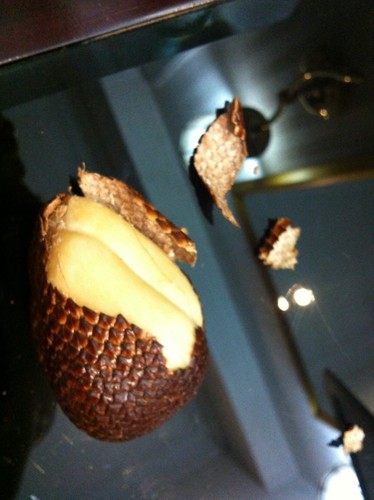 |
| Peeling the salak. Here you can see the separated fruits inside. |
The fruit inside is hard and divided into sections like garlic cloves. It is not juicy and contains a large hard seed, but the fruit is pretty good.
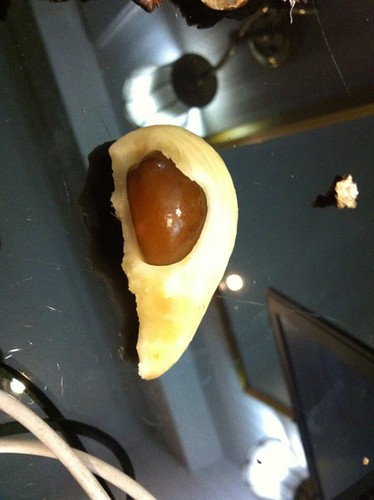 |
| Salak with seed exposed |
One fruit is particularly famous around southeast Asia for being loved by the locals and hated by western visitors. It is durian and it smells god awful. Truly. I actually haven't had a chance to taste a pure durian fruit (yet), but I did buy a durian pudding and eat a good 5 or 6 spoon fulls. I was actually surprised that it wasn't as bad as I expected. I wouldn't say I liked it, but I will say that the smell was worse than the taste.
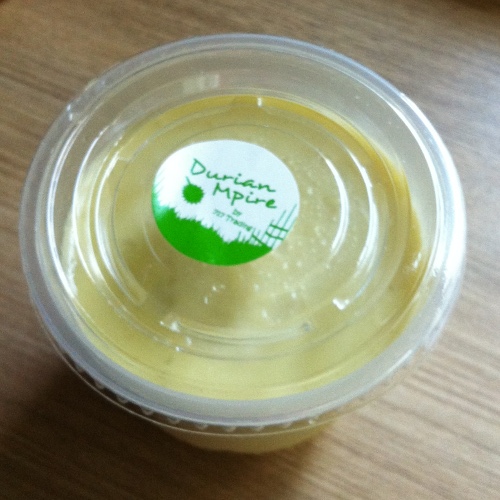 |
| Durian pudding |
I am planning to try a durian and also a dragon fruit (hopefully) in Singapore, before I head home. I also need to try one of these starfruits!
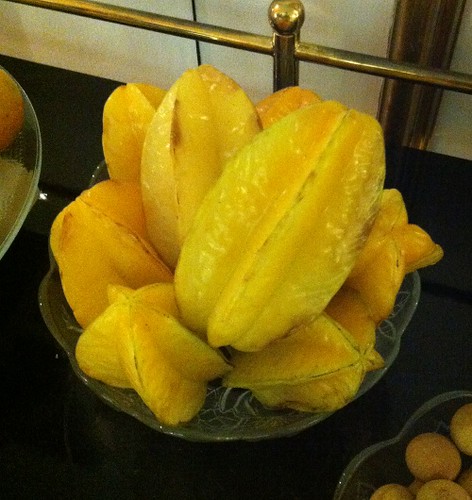 |
| Carambola (or starfruit) |
Fruit juices are very popular here, especially with lunch. I have now tried at least 6 different kinds, including strawberry, lychee, guava, the two pictured below (from fruits I had never heard of), and sirsak (two pictures down). The lychee fruit comes from the
Litchi chinensis tree. I haven't actually seen any lychee fruits, but I looked up some information on them and they are very similar to longan (below).
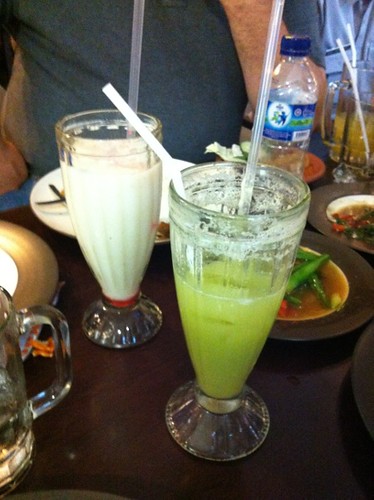 |
| Two fruit juices, popular to drink with meals |
Sirsak juice is made from the "soursop" fruit of the
Annona muricata. It is my favorite juice that I've had here. It was pretty thick and really tasted like a virgin pina colada. Does it get any better than that?
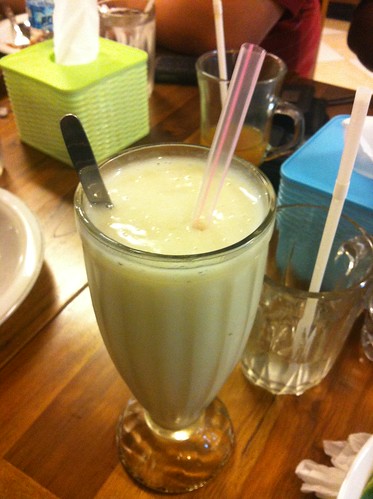 |
| Sirsak juice |
Before you peel off the woody skin, the Longan fruit looks like a tiny potato. This fruit comes from the
Dimocarpus longan tree.
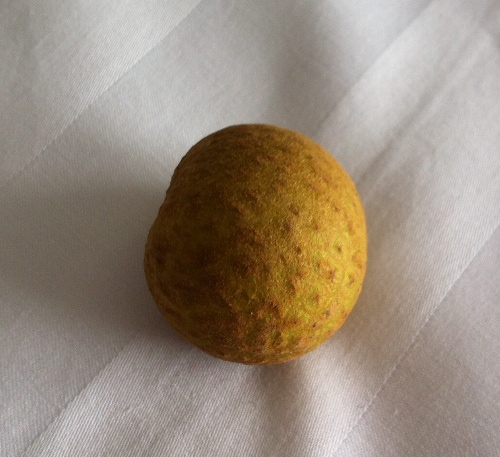 |
| Longan |
Once the skin is peeled away you can see the milky translucent fruit, which is a lot like a grape with the skin peeled away. It is juicy and has a good taste, although I can't think of anything that it tastes like. There is a large seed inside. The name longan means "dragon's eye" in Chinese, due to the appearance of the fruit and seed inside. I liked this fruit pretty well.
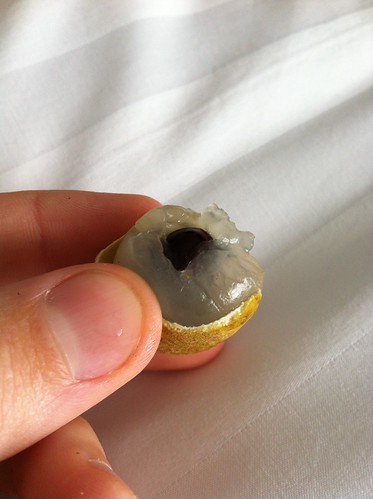 |
| The exposed inside of the Longan |
The Markisa fruit is from one of the edible species of Passionflower,
Passiflora edulis. It looks a lot like an orange on the outside, but it's a whole different ball game inside.
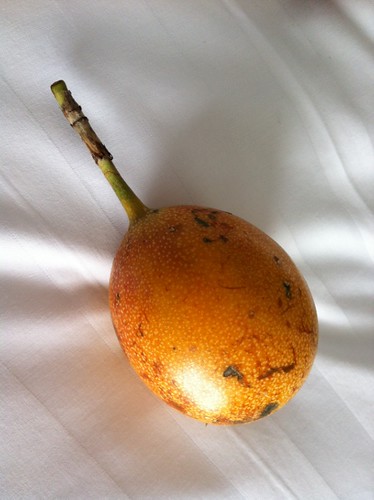 |
| Markisa (passion fruit) |
When you peel the skin away you find lots of seeds that are basically encased in a small amount of sticky fruit that is really not worth the trouble. It doesn't taste great and the fruit to seed ratio is about 1:1. That's a lot of spitting and very little to show for it. I read on wikipedia that the orange-skinned variety (like mine) is usually not eaten but the fruit juices are strained out and used for various recipes.
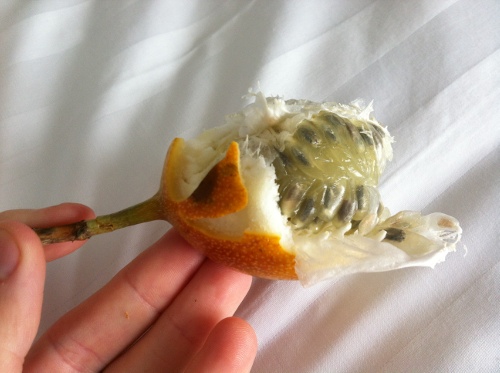 |
| Inside of the Markisa (passion fruit) |
Well, that's all for now. Off to taste some more fruits!











Whoa! My first thought is why are these fruits not grown on this side of the world in warmer climates...then I realized that you now have seeds, so I see a future for them beginning possibly in my own backyard someday. :)
ReplyDeleteI can't believe how much the longan really does look like a dragon's eye! Very appropriate name!
ReplyDeleteIs the Sirsak juice available in other parts of the world like Australia as I believe it helps cure cancer 1000 times better than chemotherapy..
ReplyDeleteHi I am from Singapore and I do have many friends/visitors from all parts of the globe. It never fail to amaze me when I introduce tropical fruits to visitors especially those from Europe and USA. Many of them have not seen these fruits, not to mention eating it...
ReplyDelete